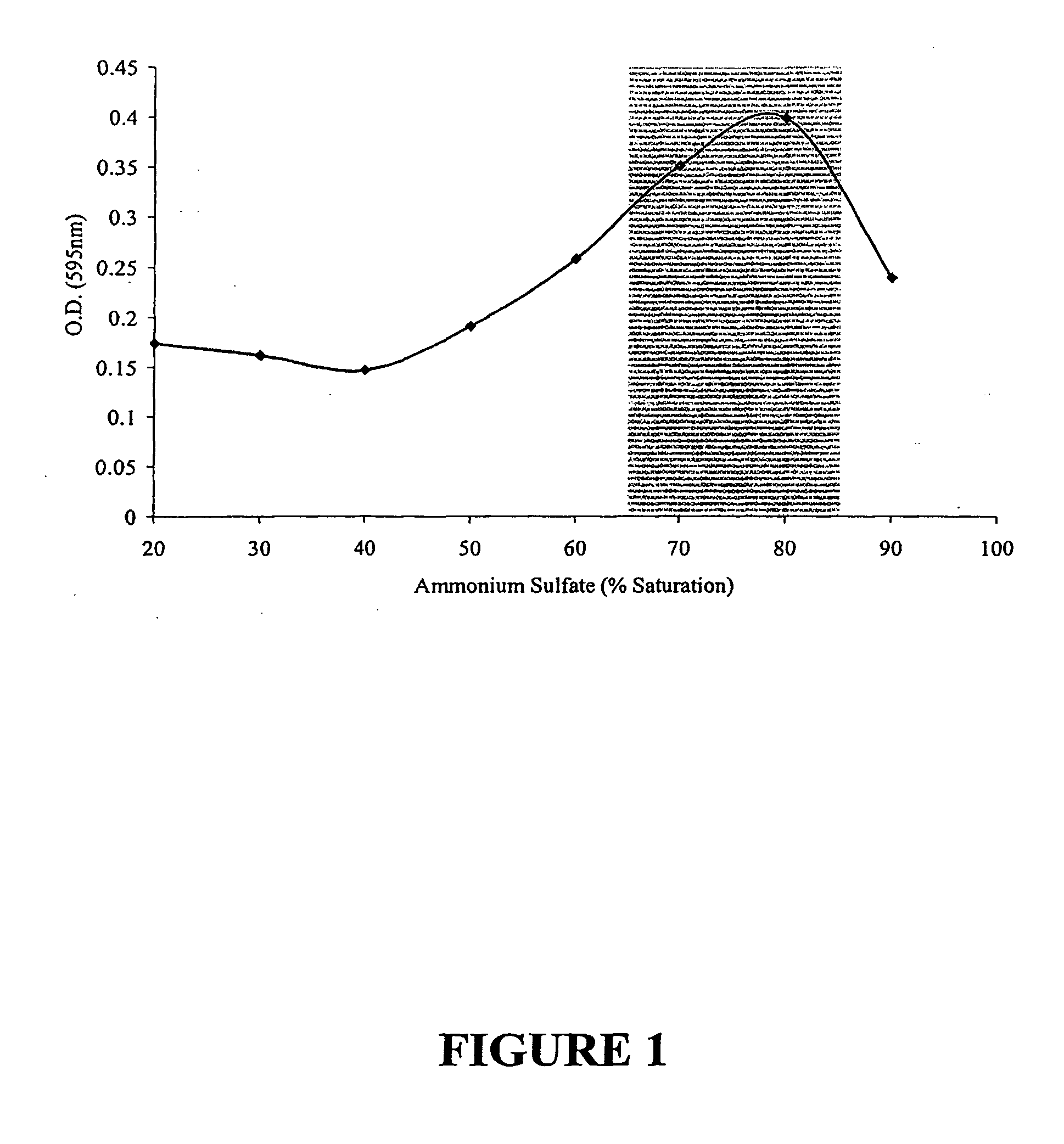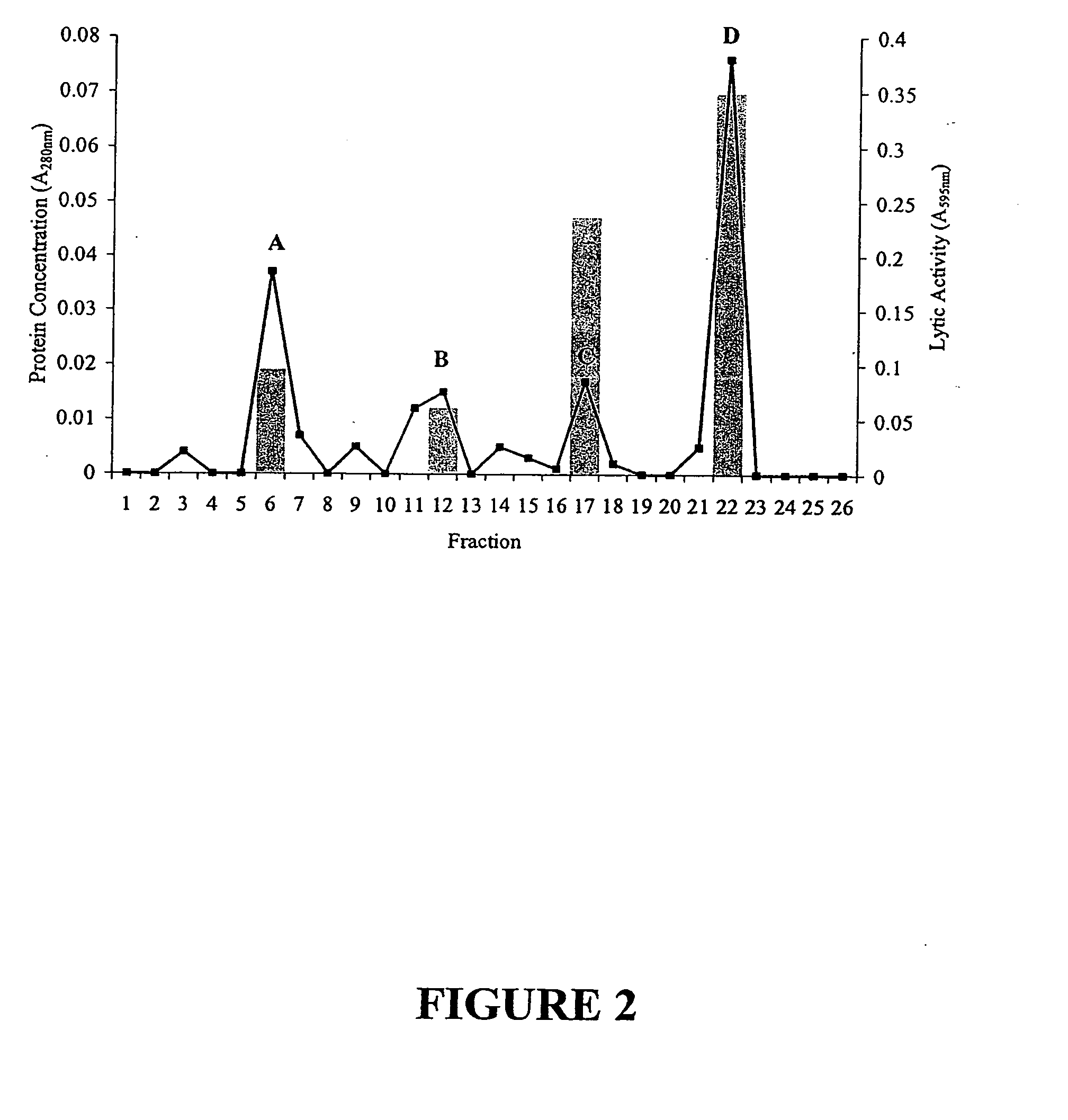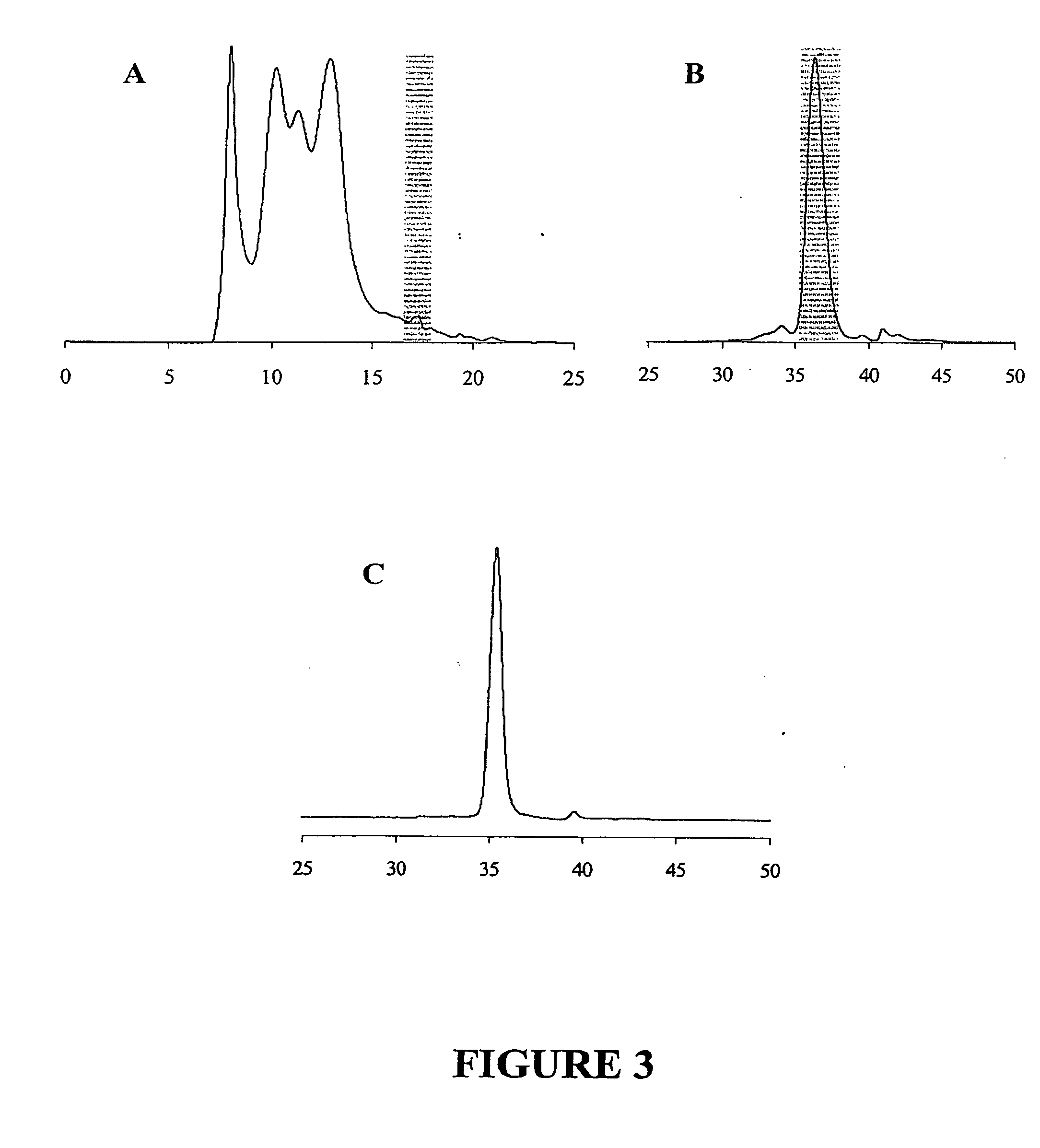Novel bacteriocin from a new streptomyces species
a streptomyces and bacteriocin technology, applied in the direction of antibacterial agents, drug compositions, peptide/protein ingredients, etc., can solve the problems that food processing and preservation are still associated with economic losses, and achieve the effect of preventing bacterial contamination of food
- Summary
- Abstract
- Description
- Claims
- Application Information
AI Technical Summary
Benefits of technology
Problems solved by technology
Method used
Image
Examples
example 1
[0084]Bacterial Strains and media. The bacterial strains used in this study are described in Table 2. Stock cultures of all strains were stored in nutrient broth (NB) with 0.4% dextrose and 20% glycerol at −80° C. Strains were subcultured onto nutrient agar (NA) with 0.4% dextrose for working cultures. Streptomyces strains in regular use were stored as spore suspensions in 20% glycerol at −20° C. and maintained as actively growing cultures on mannitol soya flour medium [33]. Strains of Streptomyces were incubated at 30° C. All other strains used were grown under their respective optimal growth conditions.
[0085]The BLIS RB72 producer strain was isolated from soil collected at Rainbow Bluff, a woodland rock outcropping in Lynn, Ala. The bacterium was cultivated from a soil sample suspension inoculated on an agar medium designed from a 1:1 dilution of a cold-water extraction (1 l soil / 1 l water; incubated for 3 days at 4° C.) of the organism's native soil. The medium was supplemented w...
example 2
[0105]The morphological characteristics of strain RB72 were examined using light and scanning electron microscopy of colonies grown on mannitol soya flour agar, nutrient agar with 0.4% dextrose, yeast extract-malt extract agar (ISP medium 2), and oatmeal agar (ISP medium 3) after 7, 14, and 21 days at 25° C. The coverslip method of Hopwood [40] was used to observe the hyphal characters by phase-contrast light microscopy with a Nikon Eclipse E600 microscope (Nikon Instruments, Inc.) equipped with a Spot RT Color imaging system (version 3.4 imaging software; Diagnostic Instruments, Inc.). For high-resolution scanning electron microscopy, agar blocks containing mycelium were fixed with osmium tetroxide (1% wt / vol in 0.1M cacodylate buffer, pH 7.2) for 2 h, passed through increased concentrations of acetone (25, 50, 75, 90, 100%), and dried to critical point with a Denton DCP-1 critical point drying apparatus. The dried samples were mounted on graphite coated aluminum stubs, coated with...
PUM
| Property | Measurement | Unit |
|---|---|---|
| Temperature | aaaaa | aaaaa |
| Temperature | aaaaa | aaaaa |
| Temperature | aaaaa | aaaaa |
Abstract
Description
Claims
Application Information
 Login to View More
Login to View More - R&D
- Intellectual Property
- Life Sciences
- Materials
- Tech Scout
- Unparalleled Data Quality
- Higher Quality Content
- 60% Fewer Hallucinations
Browse by: Latest US Patents, China's latest patents, Technical Efficacy Thesaurus, Application Domain, Technology Topic, Popular Technical Reports.
© 2025 PatSnap. All rights reserved.Legal|Privacy policy|Modern Slavery Act Transparency Statement|Sitemap|About US| Contact US: help@patsnap.com



